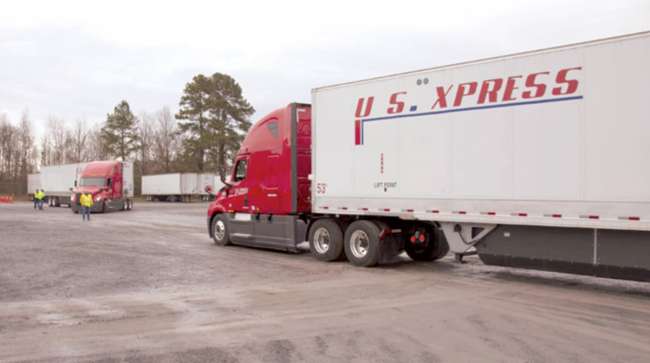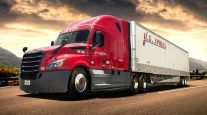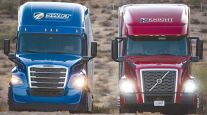Staff Reporter
U.S. Xpress Announces Strong Profit for Q3

[Stay on top of transportation news: Get TTNews in your inbox.]
U.S. Xpress Enterprises posted increased earnings on a modest revenue gain during the third quarter, the fleet announced Oct. 22.
The Chattanooga, Tenn.-based truckload carrier’s net income attributable to controlling interest was $10.7 million, or 20 cents per diluted share for the three months ending Sept. 30. That’s in stark contrast to a net loss of $1.4 million, or 3 cents per diluted share, in the 2019 period. Revenue rose 0.7% to $431.5 million versus $428.5 million the prior-year third quarter.
The results fell short of expectations by investment analysts on Wall Street, which had been looking for 23 cents per share and quarterly revenue of $442.04 million, according to Zacks Consensus Estimate.
“We continue to make progress transitioning underperforming OTR solo tractors to our digital fleet, which we have now branded as Variant,” U.S. Xpress CEO Eric Fuller said during a call with investors. “This transition remains a priority for our management team and the key to driving margin expansion.”
Variant is a digital recruitment, dispatched and managed asset-based fleet that was announced in the second quarter. Fuller noted that during the recent quarter the digital fleet grew by approximately 100 tractors at a 25% increase.
“The substantial improvement in Variant’s operating metrics including increased utilization, lower driver turnover and reduced costs, held steady from the second quarter’s levels,” Fuller said.
Variant also reportedly had an approximately 70% reduction in driver turnover during the recent quarter and substantially fewer accidents per million miles than the legacy over-the-road fleet. U.S. Xpress plans to transition an additional 400 underperforming tractors from the legacy fleet into the digital fleet by the end of the first quarter of 2021.
“The freight market strengthened through the third quarter, which boosted revenue per mile in the uncommitted portion of our OTR fleet,” Fuller said. “Hiring qualified drivers has been more challenging across our entire truckload segment.”
Fuller added attracting and retaining the right drivers has been the single largest obstacle to improving profitability. He believes the digital fleet initiative will help address the issue through next year.
“Our dedicated operations continue to deliver strong performance as we continued our trend of average revenue per tractor per week in excess of $4,000 for the sixth consecutive quarter,” Fuller said. “We have taken meaningful steps through the third quarter to improve the profitability of our brokerage division.”
The earnings report also highlighted that the third-quarter truckload operating ratio improved to 94.6 from 99.1 over the prior year. But the improvement was tempered by a higher percentage of unseated trucks in the legacy over-the-road fleet due to increased competition for drivers and suspension of the student program during the second quarter.
The truckload segment reported revenue increased 2.1% to $347.7 million for the quarter compared with $340.6 million in the 2019 period. Operating income for the segment increased 510.1% to $20.4 million compared with $3.3 million during the prior year.

Fuller (Transport Topics)
The brokerage segment reported revenue increased 21.6% to $56 million for the quarter compared with $46 million during the prior-year Q3. Operating loss for the segment was $4.5 million during the quarter compared with an operating loss of $63,000 during the previous year.
Wolfe Research noted in a report that earnings per share improved from a year ago but still were below its estimates of 24 cents. The report also noted truckload operating income was flat sequentially and nearly 20% below its model, while the large brokerage losses were slightly worse than expectations.
“We’re lowering our 4Q EPS estimate from 37 cents to 26 cents,” Wolfe Research analyst Scott Group said in the report. “With its low-end margins, USX has high-end financial and operating leverage among the TLs. We expect very strong TL pricing and strong margin improvement for USX next year, but the stock has already doubled off the bottom, so we’re keeping our Peer Perform rating for now.”
The company started with 48 trucks when it was founded in 1986. Since then, it has grown to include 7,000 tractors and 15,500 trailers. It also is one of the largest asset-based truckload carriers by revenue in the country.
U.S. Xpress ranks No. 24 on the Transport Topics Top 100 list of the largest for-hire carriers in North America and No. 31 on the TT Top 50 list of the largest logistics companies in North America.
Want more news? Listen to today's daily briefing:
Subscribe: Apple Podcasts | Spotify | Amazon Alexa | Google Assistant | More



